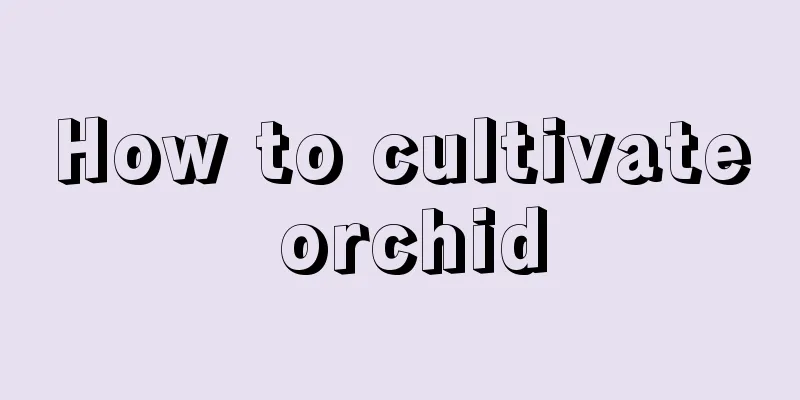How to cultivate orchid

1. Maintenance methods1. Temperature: Orchids grow better and bloom more beautifully in a warm environment. Therefore, it can be kept between 20 and 28 degrees under normal circumstances. When it is hot, it needs to be ventilated in time and not left in a stuffy place. In winter, try to keep the temperature above ten degrees. 2. Light: Orchids like light, especially when they are in the flowering period, they cannot grow without sufficient sunlight. You can always place it in a place with sufficient diffuse light, and try to keep the sunlight time no less than six hours a day. But strong direct sunlight must be avoided, and a slightly shaded or semi-shaded place is more suitable. 3. Watering: It likes semi-wet conditions and is afraid of waterlogging. Therefore, watering should be based on the method of "water thoroughly when dry". In other words, wait until the substrate is completely dry before watering, and water thoroughly each time. But water cannot accumulate in any season. 4. Fertilization: It needs to be used once every half a month. The main types of fertilizers used are phosphorus and potassium fertilizers, especially during the flowering period. 2. Breeding techniques1. Reproduction: Sowing method can be used. This method is suitable when the temperature is between 18 and 20 degrees. If you choose good quality seeds and suitable substrate, germination will be faster. When they grow into seedlings, they can be transplanted. When transplanting, be careful not to damage its roots. 2. Pruning: After flowering, the remaining flower stalks must be cut off immediately. Because if they are not cut off in time, some nutrients will be consumed and nutrients will not be well supplied to the bulbs. The next step is to prune its branches and leaves. Those that are too dense, messy, or dry need to be cut. Its shape can also be repaired regularly. 3. Problem diagnosis and treatment1. Disease: In summer and autumn, a common disease is "powdery mildew". It will cause varying degrees of damage to both leaves and flowers, which can be treated with chlorothalonil. 2. Pests: "Scale insects" and "aphids" are common pests that we are familiar with. They can be treated with omethoate and other drugs. IV. Other issues1. Toxicity: Non-toxic to orchid. Moreover, as a plant, it has the ability to absorb toxic substances. 2. Can it be grown at home? It is a flowering plant with a relatively long flowering period, making it suitable for viewing purposes. |
<<: The cultivation method of Polygonatum multiflorum
>>: How to grow succulent snow lotus
Recommend
Why doesn't the white palm bloom?
1. Unsuitable light Reason: If the light in the l...
Why does aloe vera turn red?
1. Lack of water 1. Reason: Aloe vera likes a hum...
Key points for home care of Verbena
soil Verbena does not have very high requirements...
If you grow Begonias at home, with a few cuts like this, they will bloom profusely and have green leaves, which will make you look happy!
Begonia is one of the varieties of Begonia. Its f...
Can oleander be grown indoors?
1. Harmful to the body Oleander is a poisonous pl...
Where is the best place to plant peony?
Peony Planting Place Peonies generally grow in mo...
These 5 kinds of flowers can now be kept alive by just pinching off a branch, and you never have to spend money to buy them again!
Geranium cuttings Geraniums have beautiful flower...
Can bananas be grown in the yard?
Can I grow bananas in my yard? Bananas can be pla...
Breeding methods and precautions of alpine rhododendron
Alpine rhododendron species are not easy to keep ...
Are lilies poisonous when placed indoors?
1. Is it toxic? Lily is a non-toxic flower and it...
Put these “3 kinds” of residue at the bottom of the flowerpot, it doesn’t cost any money, and the branches and leaves will grow out!
The nutrients absorbed by the roots of flower pla...
How to grow crabapple in autumn
1. Reduce watering In summer, you should water th...
How to grow crab claw flower
1. Breeding temperature During the cultivation of...
You can grow a morning glory curtain in less than 3 months
Making and Appreciating Morning Glory Curtains (P...
How to prune roses to make them bloom beautifully
If roses are not pruned for a long time, they wil...









